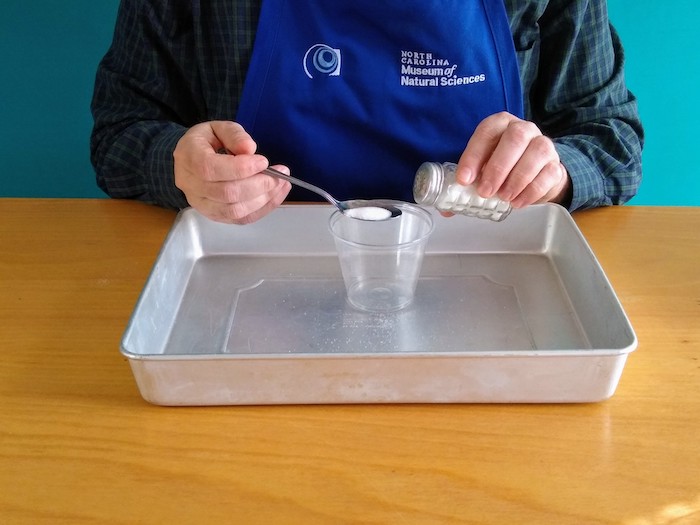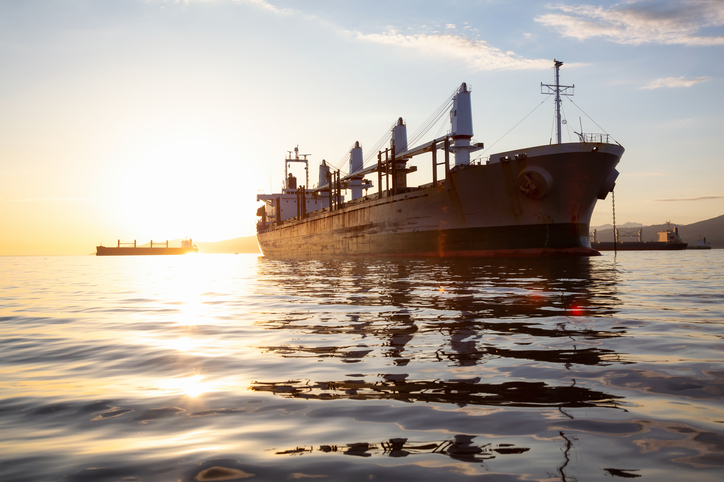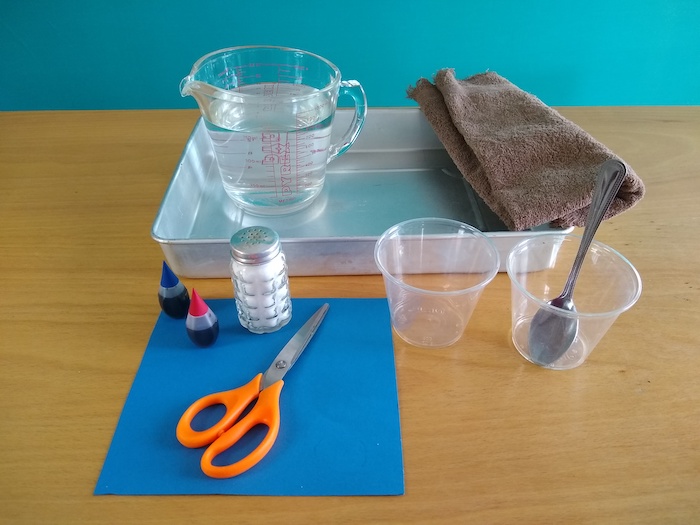Science At Home! Water Density Experiment
For immediate release ‐ April 09, 2020
Contact: Jessica Wackes, 919.707.9850. Images available upon request
Looking for something to keep your brain active and engaged? We’re here to help with Science at Home! Over the next few weeks, we’ll be providing you with fun science experiments you can conduct using commonly found items. You can also visit us at the Museum’s Science at Home page for additional resources.
Find a print-out version of this science experiment here!
Materials Needed:
Table salt
Spoon
Container of water
Red and blue food color
2 clear plastic cups
Large baking pan
Dish towel or paper towels
Experiment Instructions:

Step 1: Place one tablespoon of salt in one of the empty cups.

Step 2: Fill one cup between 1/2 to 2/3rds full with water.

Step 3: Place several drops of red food color into the same cup and stir well.

Step 4: Fill the second plastic cup about half full with water and add a few drops of blue food color, then stir. Note: do not add salt in this cup!

Step 5: Slowly and gently, hold the spoon on the surface of the saltwater while touching the inside of the cup. Drip the blue water onto the spoon. Note: It is important to do this slowly to keep the freshwater from mixing with the saltwater.

Step 6: Continue to add the blue fresh water in this manner until you’ve reached the top of the cup.

Step 7: Step back and admire your creation!
What We’ve Learned
Freshwater is able to “float” on saltwater because saltwater is more dense: it contains water molecules like freshwater, plus sodium and chlorine ions!
Natural Connections

Imagine you’re a captain of a ship sailing from one sea to another or moving from a large body of freshwater to the ocean.
You would need to be careful to load your cargo to reflect the different densities between these bodies of water. Failure to do so could — and has — ended up in ships capsizing!
A ship in saltwater will float higher than one in freshwater. Just like you will!
Having Fun?
We want to see! Tag @naturalsciences on social media so we can see you and your loved ones enjoying our Science at Home experiments.
Want More Experiments?
Try this one about water tension!
For more information about our upcoming activities, conservation news and ground-breaking research, follow @NaturalSciences on Instagram, Twitter and Facebook. Join the conversation with #visitNCMNS.


